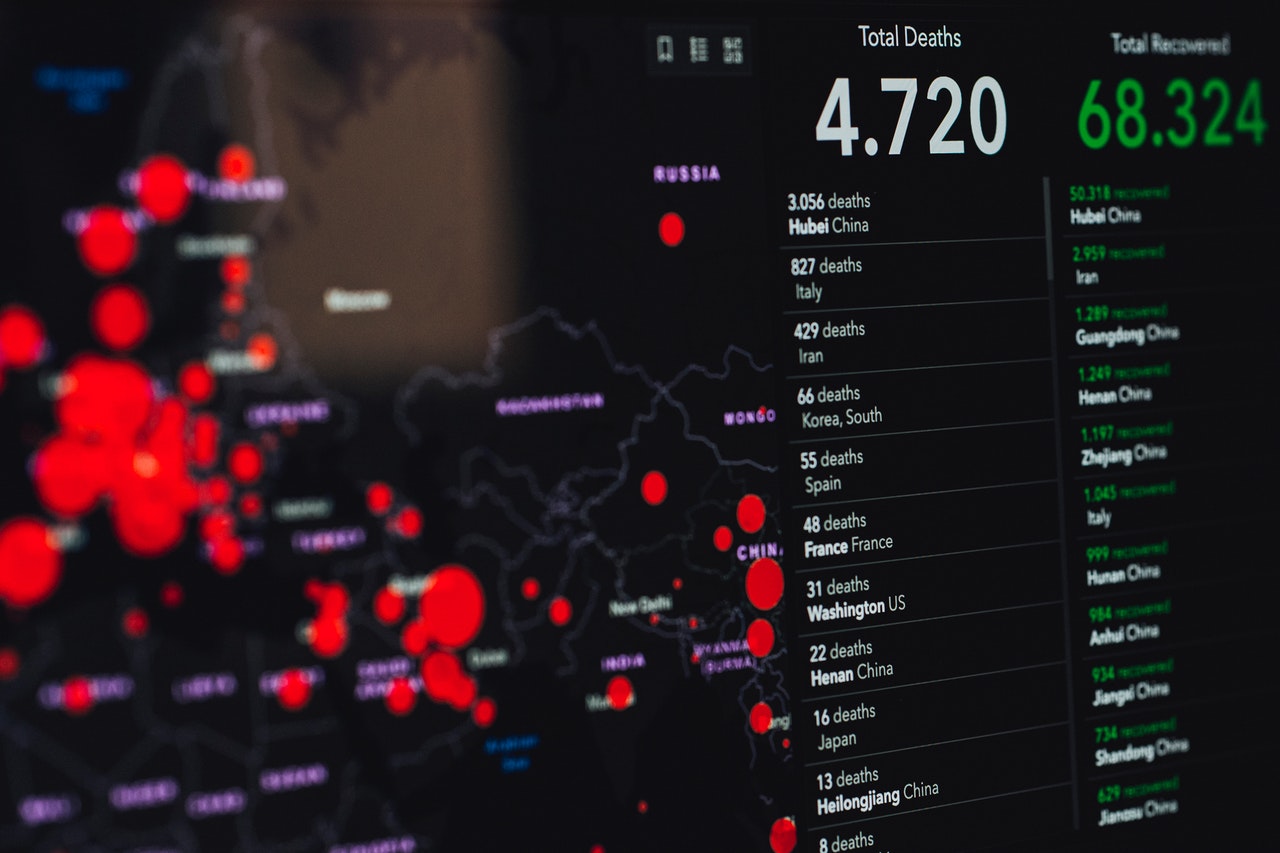Top 5 Successful Initiatives in AI and Cybersecurity
This report explores five successful initiatives that leverage artificial intelligence (AI) to enhance cybersecurity measures, showcasing their implementation, impact, and key achievements.
I. Introduction
A. Background on Cybersecurity Challenges
- Increasing Cyber Threats Cybersecurity threats have been on a steady rise over the past decade, posing significant risks to individuals, businesses, and governments alike. The proliferation of internet-connected devices, coupled with the expansion of digital services, has created a vast attack surface that cybercriminals exploit. From ransomware and phishing attacks to data breaches and advanced persistent threats (APTs), the frequency and sophistication of cyber attacks have surged. According to recent reports, the global cost of cybercrime is expected to reach $10.5 trillion annually by 2025, underscoring the urgent need for robust cybersecurity measures.
- Evolving Nature of Cyber Attacks The nature of cyber attacks is constantly evolving, driven by technological advancements and the ingenuity of cybercriminals. Traditional signature-based defenses, which rely on known threat patterns, are increasingly ineffective against modern threats. Cyber attackers now employ sophisticated techniques such as zero-day exploits, polymorphic malware, and social engineering tactics to bypass conventional security measures. Moreover, the rise of state-sponsored cyber attacks and cyber terrorism adds a new dimension to the threat landscape, making it imperative for cybersecurity strategies to evolve in parallel.
B. Role of AI in Cybersecurity
- Definition and Significance of AI Artificial Intelligence (AI) refers to the simulation of human intelligence in machines that are programmed to think, learn, and adapt. In the context of cybersecurity, AI encompasses various technologies such as machine learning, deep learning, natural language processing, and behavioral analytics. AI’s ability to analyze vast amounts of data, identify patterns, and make real-time decisions makes it a powerful tool in combating cyber threats. Its significance lies in its potential to enhance threat detection, improve response times, and provide predictive insights, thereby fortifying cybersecurity defenses.
- Overview of AI Applications in Cybersecurity AI has a wide range of applications in cybersecurity, addressing multiple aspects of threat management:
- Threat Detection and Prevention: AI-driven systems can detect anomalies and potential threats by analyzing network traffic, user behavior, and system logs. These systems use machine learning algorithms to identify deviations from normal patterns, flagging potential security incidents in real-time.
- Incident Response: AI can automate response actions to contain and mitigate cyber attacks. For instance, AI-powered security information and event management (SIEM) systems can correlate data from various sources to identify threats and trigger automated responses, such as isolating affected systems or blocking malicious traffic.
- Fraud Detection: In financial services and e-commerce, AI helps in detecting fraudulent activities by analyzing transaction patterns and user behavior. Machine learning models can identify suspicious activities that deviate from established norms, reducing the risk of fraud.
- Vulnerability Management: AI assists in identifying and prioritizing vulnerabilities in systems and applications. By continuously scanning for known vulnerabilities and assessing the potential impact, AI helps organizations proactively address security gaps.
C. Purpose of the Report
- Highlighting Successful AI-Driven Cybersecurity Initiatives The primary aim of this report is to showcase five successful initiatives that leverage AI to enhance cybersecurity. These initiatives demonstrate how AI technologies are being effectively implemented to tackle various cybersecurity challenges. By examining these examples, the report aims to provide insights into the practical applications of AI in the field of cybersecurity.
- Demonstrating the Impact and Potential of AI in Mitigating Cybersecurity Challenges Beyond highlighting specific initiatives, the report seeks to illustrate the broader impact and potential of AI in transforming cybersecurity practices. It aims to underscore the benefits of AI-driven solutions in terms of improved threat detection, faster response times, and proactive defense mechanisms. By doing so, the report advocates for the adoption of AI technologies as a critical component of modern cybersecurity strategies, emphasizing their role in safeguarding digital assets and infrastructure against an ever-evolving threat landscape.
II. Initiative 1: IBM Watson for Cyber Security
A. Overview
- Introduction to IBM Watson IBM Watson, a flagship artificial intelligence platform developed by IBM, has revolutionized various sectors with its advanced cognitive computing capabilities. Originally gaining fame for its performance on the game show “Jeopardy!” Watson has since evolved into a versatile AI system that excels in natural language processing, machine learning, and data analysis. In the realm of cybersecurity, IBM Watson applies its powerful AI and machine learning algorithms to identify and counteract cyber threats, providing organizations with enhanced security intelligence and operational efficiency.
- Specific Cybersecurity Applications IBM Watson for Cyber Security is specifically designed to augment human analysts by processing and analyzing massive volumes of data from diverse sources. Key applications include:
- Threat Intelligence Analysis: Watson analyzes structured and unstructured data to uncover hidden threats and provide actionable insights. It processes data from security blogs, research papers, and news articles to stay updated on emerging threats.
- Incident Response: Watson helps automate the incident response process by correlating threat data and suggesting appropriate remediation steps, thereby reducing the time taken to respond to security incidents.
- Vulnerability Management: Watson identifies vulnerabilities in systems and software, prioritizes them based on potential impact, and provides recommendations for mitigation, ensuring that critical security gaps are addressed promptly.
- Security Operations Center (SOC) Augmentation: Watson assists SOC analysts by triaging alerts, reducing false positives, and highlighting the most critical threats, thereby enhancing the efficiency and effectiveness of security operations.
B. Implementation
- Deployment in Various Industries IBM Watson for Cyber Security has been deployed across a wide range of industries, including finance, healthcare, retail, and government. Each sector benefits from Watson’s ability to adapt to specific security needs and regulatory requirements. For instance:
- Finance: Financial institutions use Watson to detect fraud, monitor transactions for suspicious activities, and ensure compliance with regulatory standards.
- Healthcare: In the healthcare sector, Watson helps protect sensitive patient data and medical records from cyber threats, ensuring compliance with healthcare regulations like HIPAA.
- Retail: Retailers leverage Watson to secure customer data, manage digital transactions, and protect e-commerce platforms from cyber attacks.
- Government: Government agencies utilize Watson to safeguard national security information, protect critical infrastructure, and respond to cyber threats targeting public services.
- Integration with Existing Security Systems IBM Watson is designed to seamlessly integrate with existing security systems and infrastructure. It enhances traditional security tools by providing advanced analytics and cognitive capabilities. Integration involves:
- SIEM Systems: Watson integrates with Security Information and Event Management (SIEM) systems to enhance threat detection and correlation.
- Endpoint Security: By integrating with endpoint security solutions, Watson provides deeper insights into endpoint behavior and potential threats.
- Network Security: Watson’s analytics capabilities augment network security tools, helping to identify and mitigate network-based attacks.
- Cloud Security: Watson supports cloud security by analyzing cloud environments for vulnerabilities and threats, ensuring secure cloud operations.
C. Impact and Success
- Case Studies and Success Stories Several organizations have successfully implemented IBM Watson for Cyber Security, showcasing its effectiveness:
- University of New Brunswick (UNB): UNB’s Cybersecurity Centre uses Watson to analyze vast amounts of security data, significantly improving its threat detection capabilities and reducing the time needed to identify and respond to threats.
- Woodside Energy: This energy company leverages Watson to analyze unstructured data and provide actionable insights, enhancing its cybersecurity posture and protecting critical infrastructure.
- Cargill: The global food corporation uses Watson to enhance its threat intelligence and incident response processes, resulting in faster detection and remediation of cyber threats.
- Measurable Improvements in Threat Detection and Response Organizations that have deployed IBM Watson for Cyber Security report significant improvements in their security operations:
- Enhanced Threat Detection: Watson’s ability to analyze vast amounts of data in real-time leads to the early detection of threats that traditional methods might miss.
- Reduced Response Time: Automation of incident response processes and the provision of actionable insights enable faster remediation of security incidents, minimizing potential damage.
- Lower False Positives: Watson’s advanced analytics reduce the number of false positives, allowing security teams to focus on genuine threats and improving overall efficiency.
- Operational Efficiency: By augmenting human analysts with AI-driven insights, Watson helps organizations optimize their security operations, ensuring a more robust and proactive cybersecurity posture.
III. Initiative 2: Darktrace’s AI-driven Threat Detection
A. Overview
- Introduction to Darktrace Darktrace is a global leader in cybersecurity technology, renowned for its innovative use of artificial intelligence to detect and respond to cyber threats. Founded in 2013 by mathematicians from the University of Cambridge and cybersecurity experts from government intelligence backgrounds, Darktrace has developed cutting-edge solutions to protect organizations from advanced cyber threats. The company’s flagship technology, the Enterprise Immune System, leverages machine learning and AI to monitor network behavior and identify potential threats in real-time.
- Unique AI Technology (e.g., Enterprise Immune System) Darktrace’s Enterprise Immune System mimics the human immune system by learning the ‘self’ of an organization—its normal patterns of behavior—then detecting and responding to anomalies that indicate potential threats. This self-learning AI technology continuously evolves, understanding the unique behaviors of users, devices, and networks within an organization. Unlike traditional security measures that rely on predefined rules or signatures, Darktrace’s technology adapts to new and emerging threats without needing prior knowledge or manual updates.
B. Implementation
- Real-time Threat Detection and Response Darktrace’s AI-driven approach allows for the real-time detection of threats. The Enterprise Immune System monitors network traffic and user behavior, identifying deviations that suggest potential security incidents. When a threat is detected, Darktrace’s Antigena module can autonomously respond by taking actions such as slowing down or stopping network traffic, containing the threat before it can cause significant damage. This real-time detection and response capability is crucial for mitigating the impact of fast-moving cyber attacks.
- Adaptability to Different Environments One of Darktrace’s strengths is its adaptability to various IT environments. Whether deployed in on-premises data centers, cloud infrastructures, or hybrid environments, Darktrace’s technology integrates seamlessly, providing comprehensive coverage. Its adaptability extends to different industries, including finance, healthcare, manufacturing, and government sectors, each with unique security needs and regulatory requirements. This flexibility ensures that organizations can rely on Darktrace to protect diverse and complex digital ecosystems.
C. Impact and Success
- Case Studies and Success Stories Darktrace’s effectiveness is demonstrated through numerous case studies and success stories:
- Drax Group: This UK-based power generation company implemented Darktrace to safeguard its critical infrastructure. Darktrace’s AI detected and responded to sophisticated threats that had bypassed traditional security measures, ensuring the continuous operation of vital energy services.
- Rakuten: The global e-commerce giant utilized Darktrace to protect its vast network from cyber threats. Darktrace’s self-learning AI identified unusual patterns of behavior, alerting the security team to potential breaches and enabling swift response.
- City of Las Vegas: The city government adopted Darktrace to enhance its cybersecurity posture. Darktrace’s AI detected anomalies in real-time, allowing the city to address threats promptly and protect sensitive public data.
- Reduction in False Positives and Enhanced Security Posture Darktrace’s AI-driven technology significantly reduces the number of false positives, a common issue with traditional security systems. By accurately distinguishing between benign anomalies and genuine threats, Darktrace minimizes unnecessary alerts and enables security teams to focus on real security incidents. This reduction in false positives, coupled with real-time threat detection and autonomous response capabilities, enhances the overall security posture of organizations, ensuring they remain resilient against cyber threats.
IV. Initiative 3: Google’s Chronicle Security AI
A. Overview
- Introduction to Chronicle Chronicle, a cybersecurity company that originated as a moonshot project within Alphabet’s X innovation lab, focuses on leveraging the power of big data and AI to transform cybersecurity. Acquired by Google Cloud in 2019, Chronicle offers advanced security analytics solutions designed to help organizations detect, investigate, and respond to cyber threats more effectively.
- Chronicle’s Role within Google’s Cybersecurity Framework Within Google’s cybersecurity ecosystem, Chronicle plays a critical role by providing cloud-native security analytics that scale with the needs of modern enterprises. Chronicle’s technology is integrated with Google Cloud, enhancing its capabilities with Google’s robust infrastructure and extensive threat intelligence. This integration allows Chronicle to deliver powerful, scalable security solutions that leverage the vast data processing capabilities of Google Cloud.
B. Implementation
- Leveraging Big Data for Threat Analysis Chronicle’s security platform, Chronicle Detect, harnesses big data to analyze and correlate vast amounts of security telemetry. By processing and analyzing petabytes of data from various sources, Chronicle can identify patterns and anomalies indicative of cyber threats. This big data approach enables Chronicle to provide deep insights into potential security incidents, helping organizations detect threats that might otherwise go unnoticed.
- Integration with Google Cloud Chronicle’s seamless integration with Google Cloud enhances its security offerings. Organizations using Google Cloud benefit from Chronicle’s advanced analytics and threat detection capabilities, which are built into the cloud environment. This integration facilitates real-time monitoring, automated threat detection, and rapid incident response, ensuring comprehensive security coverage across cloud-based infrastructures.
C. Impact and Success
- Case Studies and Success Stories Numerous organizations have benefited from implementing Chronicle’s AI-driven security solutions:
- Palo Alto Networks: By integrating Chronicle’s technology, Palo Alto Networks enhanced its security analytics and threat detection capabilities, providing customers with more effective protection against cyber threats.
- Johnson & Johnson: The healthcare giant utilized Chronicle to improve its security posture, leveraging big data analytics to identify and respond to threats more efficiently.
- Commonwealth Bank of Australia: This leading financial institution adopted Chronicle’s solutions to enhance its threat detection and response capabilities, ensuring the security of its digital banking services.
- Enhanced Threat Visibility and Faster Response Times Chronicle’s ability to process and analyze large volumes of security data in real-time enhances threat visibility, providing organizations with a comprehensive view of their security landscape. This improved visibility, combined with advanced analytics, allows for faster detection and response to cyber threats. As a result, organizations using Chronicle can mitigate the impact of security incidents more effectively, ensuring the continued protection of their digital assets.
V. Initiative 4: Cylance’s Predictive AI
A. Overview
- Introduction to Cylance Cylance, a cybersecurity firm founded in 2012, is renowned for its pioneering work in applying artificial intelligence to cybersecurity. Acquired by BlackBerry in 2019, Cylance focuses on using predictive AI to prevent cyber attacks before they occur. Its flagship product, CylancePROTECT, leverages machine learning to provide advanced threat prevention across endpoints.
- Cylance’s Predictive AI Technology CylancePROTECT uses machine learning models trained on vast datasets of known and unknown threats to predict and prevent malicious activities. Unlike traditional antivirus solutions that rely on signature-based detection, Cylance’s technology analyzes the characteristics and behaviors of files to determine their potential threat, providing proactive protection against malware, ransomware, and other cyber threats.
B. Implementation
- Proactive Threat Prevention Cylance’s predictive AI technology is designed to prevent threats proactively, stopping cyber attacks before they can execute. This approach contrasts with traditional reactive methods, which detect and respond to threats after they have already caused harm. By predicting potential threats based on file characteristics and behaviors, CylancePROTECT can block malware, ransomware, and other malicious activities in real-time, reducing the risk of security breaches.
- Deployment Across Various Endpoints Cylance’s technology is deployed across various endpoints, including desktops, laptops, servers, and mobile devices. This comprehensive endpoint protection ensures that all potential entry points are secured, providing organizations with a unified and robust defense against cyber threats. CylancePROTECT’s lightweight agent operates efficiently without impacting system performance, making it suitable for a wide range of environments.
C. Impact and Success
- Case Studies and Success Stories Numerous organizations have successfully implemented Cylance’s predictive AI technology:
- HITRUST: This healthcare information security organization uses Cylance to protect sensitive patient data and ensure compliance with healthcare regulations. CylancePROTECT has significantly reduced the risk of data breaches and ransomware attacks.
- Aptos: The retail technology provider adopted Cylance to secure its retail management solutions. Cylance’s AI-driven protection has helped Aptos prevent cyber attacks and safeguard customer information.
- eSentire: The managed detection and response provider integrated Cylance into its service offerings, enhancing its ability to prevent and mitigate cyber threats for its clients.
- Prevention of Zero-Day Attacks and Advanced Threats Cylance’s predictive AI technology excels at preventing zero-day attacks and advanced threats that traditional security solutions might miss. By analyzing the behavior and characteristics of files in real-time, CylancePROTECT can identify and block new and unknown threats, providing organizations with proactive defense against sophisticated cyber attacks. This capability significantly enhances the security posture of organizations, reducing the risk of data breaches and other security incidents.
VI. Initiative 5: Microsoft’s Azure Sentinel
A. Overview
- Introduction to Azure Sentinel Azure Sentinel, Microsoft’s cloud-native Security Information and Event Management (SIEM) solution, combines advanced AI-driven security analytics with the scalability of the cloud. Launched in 2019, Azure Sentinel is designed to provide comprehensive threat detection, investigation, and response capabilities, leveraging the power of Microsoft’s Azure cloud platform.
- Cloud-native SIEM and AI-driven Security Analytics Azure Sentinel stands out as a cloud-native SIEM solution that integrates seamlessly with Microsoft’s extensive ecosystem of cloud services. Its AI-driven security analytics leverage machine learning and behavioral analysis to detect and respond to threats in real-time. Azure Sentinel’s scalable architecture ensures that organizations can manage and analyze vast amounts of security data, providing robust protection against a wide range of cyber threats.
B. Implementation
- Seamless Integration with Microsoft 365 and Azure Services Azure Sentinel integrates seamlessly with Microsoft 365 and Azure services, providing comprehensive visibility into an organization’s security landscape. This integration allows Sentinel to collect and analyze security data from various sources, including Office 365, Azure Active Directory, and other Microsoft services, ensuring holistic threat detection and response capabilities.
- AI-driven Threat Hunting and Incident Response Azure Sentinel’s AI-driven threat hunting capabilities enable security teams to proactively search for potential threats within their environment. By leveraging machine learning models and behavioral analytics, Sentinel can identify suspicious activities and anomalies that might indicate a security incident. Its automated incident response capabilities allow for rapid containment and remediation of threats, minimizing the impact of cyber attacks.
C. Impact and Success
- Case Studies and Success Stories Several organizations have successfully deployed Azure Sentinel to enhance their cybersecurity posture:
- ASOS: The global online fashion retailer uses Azure Sentinel to monitor its IT infrastructure for potential threats. Sentinel’s AI-driven analytics have enabled ASOS to detect and respond to security incidents more effectively.
- SWC Technology Partners: This IT consulting firm leverages Azure Sentinel to provide managed security services to its clients. Sentinel’s advanced threat detection capabilities have helped SWC Technology Partners improve its clients’ security operations.
- Finastra: The financial software company adopted Azure Sentinel to enhance its security operations center (SOC). Sentinel’s integration with Microsoft 365 and Azure services has provided Finastra with comprehensive visibility and faster incident response times.
- Improved Incident Detection and Automated Response Capabilities Organizations using Azure Sentinel report significant improvements in incident detection and response capabilities. Sentinel’s AI-driven analytics reduce the time taken to identify and investigate security incidents, enabling faster and more effective remediation. Its automated response capabilities further enhance security operations, ensuring that threats are contained and neutralized promptly. This improved efficiency and effectiveness result in a stronger overall security posture for organizations.
VII. Comparative Analysis
A. Key Factors of Success
- Advanced AI Algorithms The success of AI-driven cybersecurity initiatives is largely attributed to the use of advanced AI algorithms that can analyze vast amounts of data, identify patterns, and detect anomalies in real-time. These algorithms enable proactive threat detection and response, enhancing the overall security posture of organizations.
- Integration with Existing Systems Successful AI-driven cybersecurity solutions seamlessly integrate with existing security systems and infrastructure. This integration ensures that organizations can leverage AI capabilities without disrupting their current operations, providing a unified and comprehensive defense against cyber threats.
- Real-time Threat Detection and Response Real-time threat detection and response capabilities are crucial for mitigating the impact of cyber attacks. AI-driven solutions that can identify and respond to threats in real-time enable organizations to contain and neutralize threats before they cause significant damage.
B. Common Challenges and Solutions
- Integration Challenges Integrating AI-driven cybersecurity solutions with existing systems can be complex and challenging. Organizations need to ensure that these solutions are compatible with their current infrastructure and that they can be implemented without causing disruptions. Investing in integration planning and leveraging professional services can help overcome these challenges.
- Data Privacy Concerns The use of AI in cybersecurity involves processing and analyzing vast amounts of data, raising concerns about data privacy and security. Organizations must ensure that their AI-driven solutions comply with data privacy regulations and that they implement robust data protection measures to safeguard sensitive information.
- Scalability and Adaptability As cyber threats continue to evolve, AI-driven cybersecurity solutions must be scalable and adaptable to address new and emerging threats. Organizations should invest in solutions that can scale with their needs and adapt to changes in the threat landscape, ensuring continuous protection against cyber attacks.
VIII. Future Trends and Predictions
A. Evolution of AI in Cybersecurity
- Emerging Technologies and Innovations The field of AI in cybersecurity is constantly evolving, with new technologies and innovations emerging to address the ever-changing threat landscape. Advances in machine learning, deep learning, and behavioral analytics will continue to enhance the capabilities of AI-driven security solutions, providing more effective protection against sophisticated cyber threats.
- Future Potential and Areas of Growth AI has the potential to transform cybersecurity by enabling more proactive and adaptive defense mechanisms. Future areas of growth include the development of AI-driven threat intelligence platforms, autonomous security operations centers (SOCs), and advanced threat hunting capabilities. These innovations will help organizations stay ahead of cyber threats and ensure the continued protection of their digital assets.
B. Recommendations for Organizations
- Adopting AI-driven Cybersecurity Solutions Organizations should consider adopting AI-driven cybersecurity solutions to enhance their security posture and protect against advanced cyber threats. By leveraging the capabilities of AI, organizations can improve threat detection, response, and prevention, ensuring robust protection against cyber attacks.
- Investing in AI and Cybersecurity Research Investing in AI and cybersecurity research is crucial for staying ahead of emerging threats and developing innovative solutions. Organizations should support research initiatives and collaborate with industry experts to advance the field of AI in cybersecurity, ensuring the continuous improvement of their security capabilities.


















